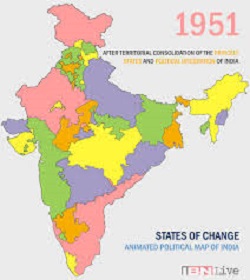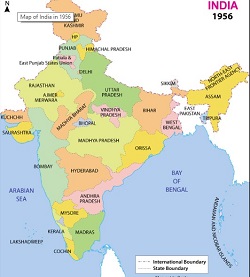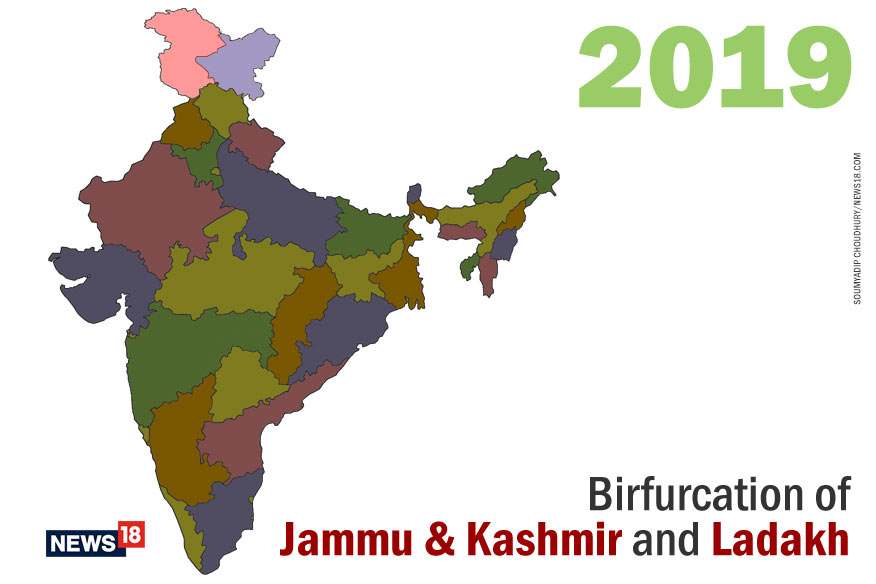- Recall the vertical power sharing that you have studied in the last lesson. This form of power sharing is called Federalism.
- Federalism is a system of government in which the power is divided between the central authority and various constituent units of the country.
- The one at the top level is responsible for a few subjects of common national interest.
- The other governments at the level of provinces or states are responsible for day-to-day administration of the state.
- The central and the state governments enjoy their power independent of the other.
Differences between Federalism and Unitary democracy
- Under the unitary system, usually you’ll find only one level of the government for the entire country.
- If there are sub units, they are subordinate to the central government.
- The central government can pass order to the provincial or the local government.
- In contrast, the central government cannot order of the state government.
- State government has powers of its own for which it is not answerable to the central government.
- Both these governments are separately answerable to the people.
Key Features of Federalism
- There are two or more levels of government.
- Different levels of the government govern the same citizens. Each of these levels has its own jurisdiction in specific matters of legislation, taxation and administration.
- The existence and powers of these levels of the government is constitutionally guaranteed because the jurisdiction of these governments is mentioned in the constitution.
- The fundamental provisions of the constitution cannot be unilaterally changed by one level of government. Such changes require the approval of both the levels of government.
- Courts have the power to interpret the constitution and the powers of the different levels of government. In case of disputes between different levels of the government, the highest court acts as an umpire.
- Sources of revenue for each level of government are clearly specified in the constitution to ensure financial autonomy.
- The Federal System has duel objectives. The first one is to safeguard and promote unity of the country. The second is to accommodate regional diversity.
The important aspects that are integral part of an idea federalism
Types of Federations
The power sharing arrangement between the central government and the state governments varies from one federation of the other. It is mainly determined by the historical context in which the Federation was formed. We find two different types of federations. They are as follows.
Coming Together Type of Federation
- Many Independent States come together to form a Federation.
- They pool in their sovereignty in order to enjoy more security
- All the states enjoy equal amount of power
- The states are as powerful as the Centre
- A state can walk away from the Federation
Holding Together Type of Federation
- An existing country is divided into provinces/states
- Not all the units enjoy equal power
- The Central Govt. tends to be more powerful than the state/provincial Govts.
- A state can not walk away from the Federation
What Makes India a Federation?
Three Fold Distribution of Power between the Union Government and State Governments
The union list
- They contain the subjects of national importance
- Only the Union Govt. can make laws on them
- foreign affairs, banking, communication and currency are some examples of it.
The State list
- They contain the subjects of Local importance
- Only the State Govt. can make laws on them
- Usually the Union Govt. doesn’t intervene.
- Police, trade, commerce, agriculture and irrigation are some examples of it.
The Concurrent list
- This list includes subjects of common interest to both the Union Government and the State Governments
- Both the governments can make laws on the subjects mentioned in the list.
- In case of conflict, the law make by the Union Govt. holds good.
- Forest, education, marriage, adoption are some examples of it
The Residuary Subjects
- There are some subjects that do not fall in any of these lists
- Some new subjects have come up after the constitution has been adopted.
- They are included in this list
- Only the Union Govt. can make laws on them.
- Computers, software are example of it.
Not all regions/states enjoy special status in India
- Not all states in India enjoys equal powers. Some states enjoy special status.
- Jammu and Kashmir was an example of it. This state had its own constitution. Many provisions of the Indian constitution were not applicable to this state without the approval of the State Assembly. The Article 370, which gave such special provison was abrogated in 2019
- Only Kashmiri citizens could buy property in the Jammu and Kashmir. Other Indians couldn’t buy the property there.
- Many North East Indian states also enjoy special status.
- For example, people from outside Nagaland cannot buy property there. This arrangement is done to protect the right of indigenous people on their land.
- Union Territories including (Jammu and Kashmir and Ladakh) of India enjoy special status. The union government rules these territories.
- Kalyana Karnataka region also enjoys special status as per the Article 371(J)
.
Rigid Constitution
- It is not easy to make changes to the power sharing arrangement mentioned in the constitution.
- Neither the Union Government nor the State Governments can make changes to the constitution unilaterally.
- Any change to this must be approved by both the houses of the parliament with at least 2/3 majority.
- Then it should be ratified (approved) by more of their half of the total states.
The Practice of Federalism in India
Reorganisation of States




- If you analyze the political maps of India of shown above, you’ll find many changes. Some board states have vanished and many new states have been created. This creation of new states is a continuous process.
- In the initial phase, states were created on the linguistic basis, that is, based on languages that the people speak. Some examples of such states are Karnataka, Tamil Nadu, Maharashtra etc.
- In recent times states are being created based on ethnicity, geography and culture. Examples of such states are Nagaland, Uttarakhand and Jharkhand.
- Our leaders were not ready to create states on the linguistic basis. They thought that creation of linguistic states would lead to disintegration of the country.
- Contrary to their belief, the formation linguistic states has actually made the country more united. It has also made administration easier.
Language Policy
- Our constitution did not give the status of national language to any one language.
- Apart from Hindi, there are 21 other languages recognized as scheduled languages by the constitution.
- A person taking competitive examination can write the examination in any of the 22 languages.
- Every state can have its own official language. Much of the government work takes place in the official language of the concerned state.
- The use of English in our country was to stop by 1965. Non-Hindi speaking states pressurized for the retention of it. Hence English stays.
- Even Hindi is not promoted aggressively in non-Hindi speaking states.
- There was violent protest in Tamil Nadu against spreading of Hindi.
- Now, both Hindi and English are used for official purpose.
Centre-State Relations
- The success of federalism also depends upon how the ruling parties and leaders followed these arrangements.
- Ideally, there should be cordial relationship between the central government and the state governments.
How was the relationship earlier?
- For a long time, the same party ruled both at the Centre and in most of the
- The state governments did not enjoy their autonomous power.
- India, during those days, was only Federal in principle but Unitary in practice.
- When a different party came to power in the state, the central government would arbitrarily dismiss the state government.
- This also went against the principles of Federalism.
How is the relationship now?
- All this changed significantly of the 1990.
- This was the beginning of the era of coalition governments.
- Since no our record clear majority in the Loka Sabha, the major national parties formed an alliance with regional parties to form government in the Centre.
- This led to a new culture of power sharing and respect for regional autonomy of the state governments.
- A major judgment of the supreme court has made it difficult for the central government to dismiss the state governments in an arbitrary manner.
- Thus, Federal Power sharing is more effective today than it was in the early years.
Decentralisation
Decentralisation in India
- Taking some powers of the Centre and some of the states and giving them to Local Self Governments is called Decentralisation.
Why is Decentralisation necessary in India?
- Some states in our country are very big and populous. The two Tier system is not sufficient. We need further power sharing arrangement.
- These big states are internally very diverse. Diverse population has diverse needs and aspirations. This can be achieved only by the local self-governments.
- There are many problems and issues which are best settled at the local level. People have better knowledge of problems in their localities. They also have better ideas on where to spend money and how to manage things more efficiently.
- It also provides an opportunity for the people to participate in the decision-making process.
- This helps to inculcate a habit of democratic participation.
- Panchayats in villages and Municipalities in urban centres were there in many states.
- But these were directly under the control of the State Governments.
- Elections were not held regularly.
- Local Self Governments did not have any powers or resources of their own
Now it is constitutionally mandatory to hold regular elections to local government bodies.
Seats are reserved in elected bodies for the schedule castes, schedule tribes and other backward classes.
At least 1/3 all positions are reserved for women.
An independent institution called state election commission has been created in each state to conduct elections to local bodies.
These state governments are required to share some powers and revenue with local government bodies. The nature of sharing varies from state to state.
- At the Village Level: Village Panchayat or Grama Panchayat is constituted for a few villages. Villages are divided into wards. All the adult members of the villages elect their representatives. Political Parties are not allowed to contest in these elections.
- Grama Sabha is the group of all the adult members of the villages. This Sabha should meet at least twice or thrice a year.
Functions of Grama Sabha:
- It supervises the functioning of the Village Panchayat.
- It approves the Annual Budget of the Village Panchayat.
- It reviews the performance of the Gram Panchayat.
- At the Taluk Level: Panchayat Samiti or Block or Mandal or Taluk Panchayats are constituted at the Taluk Level.
- At the District Level: Zilla Panchayat or Zilla Parishad are constituted at the District Level. Apart from elected representatives, the MP of the district and the MLAs of the districts are members to the Zilla Parishad.
- At the Town Level: Municipalities are constituted at this level. The Political head is called the Municipal Chairperson.
- At the City Level: Municipal Corporations are found in this level. The city is divided into wards. The elected representatives are called Corporators. The Political head is called the Mayor.
The success of Decentralisation
- Constitutional status for local self-government has helped to deepen democracy in our country.
- It has also increased women’s representation and their voice in our democracy.
- It has made our democracy more inclusive and participatory.
The Challenges to Decentralisation
- Though elections are held regularly and enthusiastically, Grama Sabhas are not held regularly.
- Most state governments have not transferred significant powers to the local governments.
- Even the resource transfer is not adequate.
One mark Questions
- What is Federalism?
- What is Unitary Democracy?
- Mention any two differences between Federalism and Unitary Democracy.
- What is Jurisdiction?
- What is the duel objective of a Federal Structure?
- Mention the two most important aspects necessary to make a successful Federation.
- What is Coming Together type of Federation? Give an example.
- What is Holding Together type of Federation? Give an example.
- What is Union List? How many subjects are there in this list?
- What is State List? How many subjects are there in this list?
- What is Concurrent List? How many subjects are there in this list?
- What are Residuary Subjects? Who has the power to make laws on them?
- Mention any two features to show that Jammu and Kashmir enjoys special status.
- Give any two examples to show that different states in India enjoy different powers.
- What are linguistic states?
- Why did Nehru, Rajaji and some others oppose the idea of linguistic states?
- Give examples of states that are created on the bases of ethnicity, culture and geography.
- Is there a National Language in India?
- Which is the Official Language of India?
- Which is the Second Official Language of India?
- How many languages are given the Scheduled Status by the Indian Constitution?
- What is Decentralisation?
- Which body is responsible for conducting elections to the Local Self Government in States?
- In which level of the Government there is a minimum reservation of 1/3 seats for women?
- Name the Local Self Government present in Cities.
- What are the elected representatives of Municipal Corporations called?
- Who is the head of Municipal Corporation?
- When was the constitution amended to make the Local Self Government stronger and meaningful?
- What is Grama Sabha?
- What are the functions of Grama Sabha?
Three mark Questions
- Distinguish between Coming Together type of Federation and Holding Together type of Federation.
- How is power shared among the different levels of the Government in India?
- What steps have to be taken to change the power sharing arrangement between the Centre and the states in India?
- What are the benefits of Linguistic States?
- Write a note on the Language Policy of India.
- Discuss why the Centre-State relations have improved in the last few years.
- What is Decentralisation? Why is it necessary in India?
- Explain the structure of the Local Self Government in India.
- Mention the success of the Local Self Government.
- Describe the challenges to Local Self Government.
Five Mark Questions
- Explain the Key features of Federation.
- Discuss the aspects that make India a Federation.
- Discuss the 1992 amendment that has made Local Self Government more effective and powerful.
